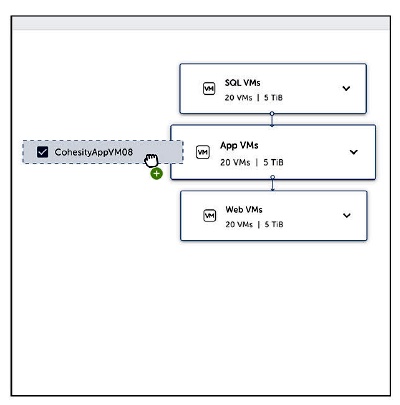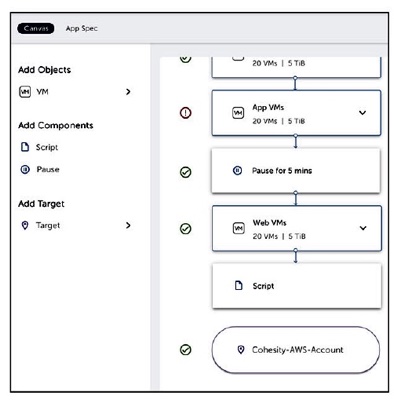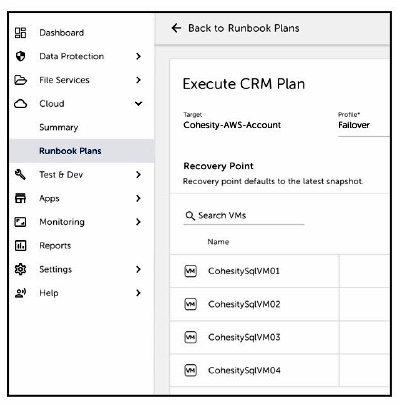Cohesity’s Runbook application makes designing, testing and operating a cloud disaster recovery site safer, smoother and speedier. The app helps users visualise the entire DR site startup checklist process and automate their workflow.
Launched today, Cohesity Runbook is intended for customers who backup their VMs with Cohesity’s Data Platform backup system. Cohesity has devised a way of moving virtualised workloads between on-premises and public cloud data centres for disaster recovery, starting with the design stage and progressing through test, validation and operation.
Disaster recovery in the public cloud means customers can avoid operating their own disaster recovery site. But it also means that virtual machines (VMs) – and their data – in the customer site have to be moved to the public cloud. If the primary site fails, the cloud DR site has to be spun up and made operational and the VMs must spin up in the right sequence.
The startup process must be designed, tested and validated so that it just works when failover to the cloud DR site is needed. This can involve incompatible virtual machine formats and a host of manual processes, scripts, dependencies and boot sequences. If a step in the process fails the DR startup sequence is interrupted and must be fixed under extreme time pressure.
Cohesity’s approach to the DR process involves moving a suite of virtual machines to the cloud. The suite has a systematic startup process and initiates component VMs in a formal sequence. This ensures that dependencies such as a prior VM is operational before a subsequent VM starts up.
Runbook features
Cohesity Runbook has a graphical design canvas that customers use to drag, drop, and design automation workflows so that the right sequences happen in the right order as workloads move from one location to another.

APIs allow administrators to integrate with their preferred infrastructure-as-code automation tools so they can continue to use them.

Runbook works with Cohesity CloudSpin to failover to the public cloud automatically. It converts VM formats and boots up cloud VMs in the right sequence, obeying the right dependencies.
CloudSpin eliminates manual processes and provides instant access to Cohesity backup data in the cloud for application testing and development. Users can instantly convert backup data stored on Cohesity DataPlatform into a new virtual machine for test/dev in the cloud.

Runbook can also be used for the fail-back process when the primary site is operational again.
Cohesity Runbook supports VM DR and cloud workload migrations to Amazon Web Services. It will support other public clouds in coming quarters. Cohesity will also evaluate other use cases beyond disaster recovery for automation through this Runbook.
A 2-page RunBook Solution Brief provides more information. Cohesity Runbook is generally available to all customers via the Cohesity DataPlatform v 6.4 software release.
DR in public cloud
Connecting on-premises data centres to the public cloud for data protection, disaster recovery and general storage is a hotbed of development.
Yesterday we saw Druva buy Cloudlanes to gain fast transfer of backup data to the public cloud. There’s also cloud-based disaster recovery via Druva and DR-as-a-Service launched in March 2019. A third example is WANdisco’s joint-venture, announced earlier this month, to integrate its live data replication application, called Fusion, with technology provided by an undisclosed cloud service provider.








